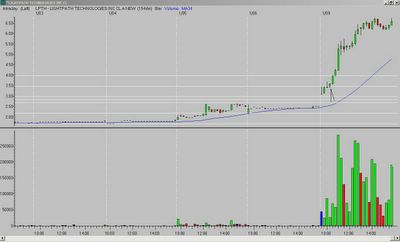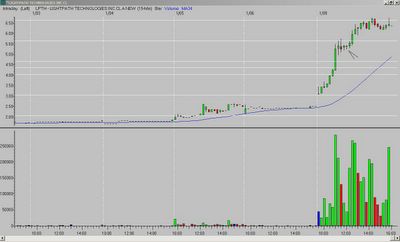
I talked about the trade I missed earlier - Todd's entry was a break of the fourth bar high; a good entry as it was a narrow range bar that rallies off the opening range (OR) high. If you are conservative and practicing sound money management, you would have closed 1/2 of the position at the Fibonacci extension of the previous day's low to the OR high. You could have held the other 1/2 until you saw signs of weakness.
Now, for the trade I did take:

1.) What did I see?
Bars eight-eleven consolidated the morning's big move, and the eleventh bar formed a nice hammer. It was also a narrow range bar (NR7), and an inside bar.
2.) What is the entry?
A break of the eleventh bar high.
3.) What is the exit?
Note that I re-drew my Fibonacci lines over the morning low to the high of the eighth bar (11:15). That gave me a target - the Fibonacci extension of the afore mentioned low/high. The target was hit mid-afternoon.
For those of you without a calculator handy, the total for that trade was over 20%.
Notes - as with any entry below/above a previous high/low (in the case of my charts, the opening range (OR) high/low), you need to watch for resistance/support as price approaches those levels. If it stalls, you want to exit. If it breaks through, the odds are good you will have a move to the corresponding Fibonacci extension. Also, note how the Fibonacci extension kept LPTH from going any higher for the day - amazing how accurate some things can be.



No comments:
Post a Comment